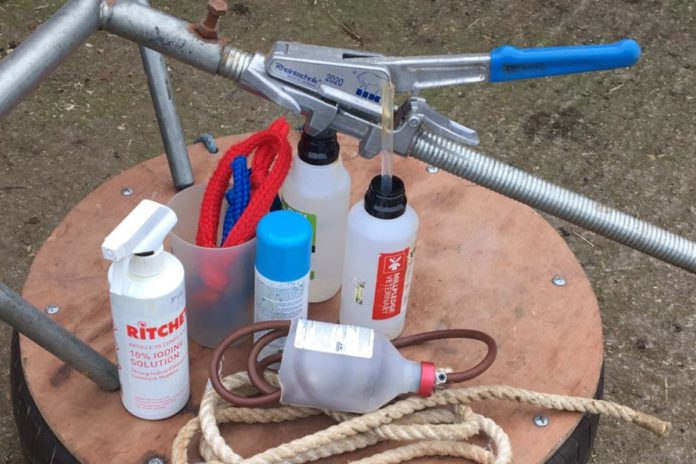John Sands, senior beef, and sheep adviser with CAFRE, explains how suckler farmers can prepare for calving 2022.
Calving can be a difficult and stressful time, especially if you are not prepared for it.
Preparation will make all the difference on suckler farms as we approach the spring calving season.
Prepare for calving 2022
- Check service dates and scanning results;
- Provide a good dry period;
- Ensure cows are ‘fit not fat’;
- Feed a quality ration;
- Prepare facilities;
- Prepare equipment
- Learn from experience;
- Help;
- Veterinary practitioner;
-
Check service dates and scanning results
First, check your service records and draw up a chart of when you expect each animal to calf. Perhaps, add a few columns to record calving details such as proposed and actual calving date, level of calving difficulty, calf size and sex.
The chart is a useful management tool, building up a picture of how your bull and the cows perform, e.g. average gestation length.
If you use AI, the average gestation length for the particular bull you use should be available in the semen supply company catalogue, providing you with the expected calving date.
Pregnancy scanning two to three months after service is also a good management tool as it will:
- Confirm pregnancies;
- Pick up the empty cows;
- Determine twins and identify in good time if there are fertility problems within the herd that may need veterinary intervention or investigation.
-
Providing a good dry period
A good two-to-three-month dry period allows cows time to build up body reserves and repair damaged udder tissue in preparation for the next lactation.
-
Ensure that cows are ‘fit’ to calve
Cows should be ‘fit but not fat’ at calving. Manage them throughout the year to achieve this. Fat cows often have difficult calvings, whereas thin cows struggle to maintain weight after calving and do not produce as much good quality milk to grow the new calf.
Feed a maintenance only diet during the dry period to maintain body condition scores around 3 to 3.5 (5-very fat, 1-very thin).
Where possible, cow condition should be manipulated before going dry or early in the dry period as additional feed in late pregnancy can simply grow a bigger calf and add to calving difficulties.
-
Feed a quality ration
50% of foetal growth occurs in the last three months of pregnancy. In addition to rapid foetal growth, the uterus, placenta and surrounding foetal fluids must also increase in size during this time.
It is important that pregnant animals receive adequate energy, protein, vitamins, and minerals to assist with this growth ensuring live healthy births and a quick return to normal cycling by the cow afterwards.
You can provide this by feeding 30-35 kg good quality silage daily along with a suitable dry cow mineral, low in calcium to avoid the onset of milk fever at calving but high in other minerals and vitamins like selenium and vitamin E, which are necessary for the pregnant animal and reduce things like afterbirth retention.
-
Prepare facilities
Clean out calving and disinfection, but also carry out repairs to floors and gates carried out in good time. If you have not got enough straw bedding, you should set to task and purchase it or an alternative like woodchip or rubber mats.
Calves born onto wet slippery floors waste a lot of valuable energy trying to stand up and often miss out on getting enough valuable, lifesaving colostrum within the first 4-5 hours (10% of body weight-3-6 litres).
Perhaps, this is the year you should invest in a good calving gate. They are invaluable. The cow or heifer can be provided with assistance calmly and safely, with much less stress and effort required by farmer and beast.
-
Prepare equipment
Do you need to replace calving ropes? Is it time for a new halter? Iodine or blue spray for the navels is a must; a bottle of lubricating gel for use in a tight calving and long arm calving gloves to check what is going on would be handy to have. Do not forget the flutter valve and a fresh bottle of calcium.
-
Learn from experience
Take some time to think about what went well, and not so well, during last year’s calving season and decide what you will do differently this year.
If you are a newcomer to the activity, it might be best to go online, check out a few videos or purchase a good practical veterinary book. Ask a good neighbour.
Most importantly, when it comes to health and safety, remember never to take unnecessary risks.
-
Help
Have you got help lined up if it is needed? Make sure it’s reliable and, if needs be, experienced.
-
Veterinary practitioner
Last but not least, make sure that you have your veterinary practice number stored on your phone in case of a difficult calving or emergency.
Remember that the cost of veterinary assistance will be much less than the impact of a dead calf.





